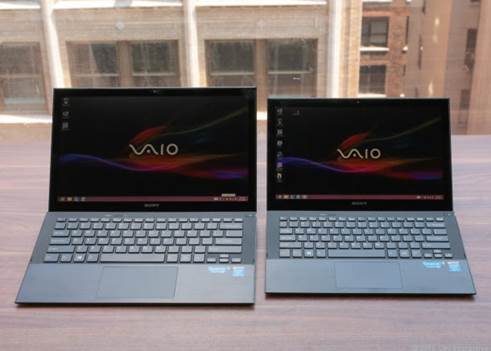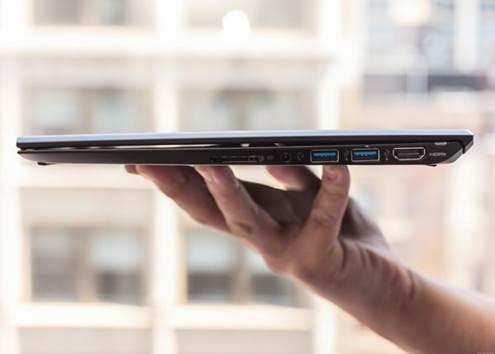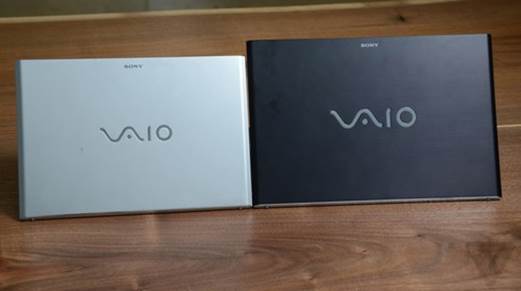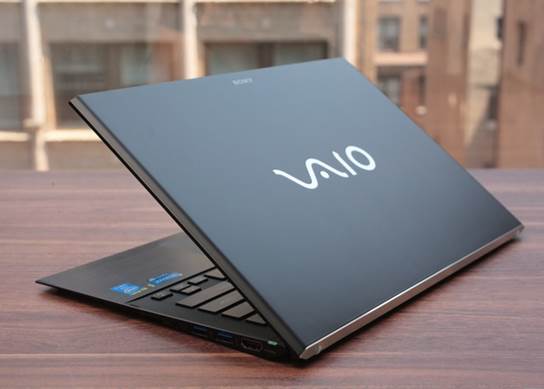Finally, there has been a new high-end
Ultrabook to replace the Z.
If you have ever read the comments section
at Engadget, you learn that it is possible to develop a fanatical loyalty to a
brand. However, with one particular product? And a laptop, that's pretty rare.
But the Vaio Z was not a normal laptop. For many years, it has been Sony’s
flagship ultraportable, with the lightweight design, the leading specifications
and a subtle carbon fiber weave. It was the type of laptop for which the
technology staff happily spent $2,000 - and they were willing to spend more
when a new version appeared. Then it had to stop producing, replaced by the
mid-range models with lesser specs. It was an obvious flaw in Sony's lineup,
and loyalists were disappointed, there was no clear upgrade path when it came
time to retire the old Z model.

Starting
with $1,150 and available in the sizes of 11 and 13 inches, these laptops
utilize carbon fiber to get an even lighter design (under two pounds for the 11
inch model). Both have new Haswell processors, with 1080p screens, NFC and
backlighting keyboards as the standard.
Considering it in a way, the Z is still
dead: there is no Z series in Sony’s lineup. But there is the new Pro line, and
it more or less chooses where the Z left off. (It's just like the
business-friendly S series). Starting with $1,150 and available in the sizes of
11 and 13 inches, these laptops utilize carbon fiber to get an even lighter
design (under two pounds for the 11 inch model). Both have new Haswell
processors, with 1,080p screens, NFC and backlighting keyboards as the
standard. Incidentally, we have tested the smaller Pro 11 for almost two weeks,
so even though Sony has just proclaimed these machine lines to the public, we
have all been impressed, and the tests and the actual images are ready to go.
Let us see if this is the Z replacement that you have been expecting.
Design and feel

With
1.92 pounds, Sony proclaims it is the lightest touchscreen ultrabook in the
world – in the 11 inch category or otherwise.
If you check out the Pro through a glass
box, it will seem like another VAIO, except for the size reduction. After all,
it has many of visual touches similar to the previous models, including a
chiclet keyboard, a chrome hinge, a large metal VAIO logo and a sparkling green
power button, located on the upper right corner of the keyboard tray. But
that's the problem: you cannot really appreciate the design of the Pro until
you pick it up. You cannot talk about its hardware until you know how light
this stuff is. With 1.92 pounds, Sony proclaims it is the lightest touchscreen
ultrabook in the world – in the 11 inch category or otherwise. Regardless of
whether that is true or not (and we believe it is true), the Pro feels totally
unreal, but in a good way. Even after Sony's product team let me know the exact
weight, I did not immediately appreciate how small it was; when you opened the
box of the model to check it out, I picked it up as the way I did with the
style of 3.5-pound Ultrabook, only to realize its gravity wasn’t against my
hands, like playing a game of tug of war with a baby.
You are able to imagine how convenient it would
do on a daily basis. It is not only easy to hold in one hand and carry from
room to room, but I also did not recognize the difference when I stuffed it
into my backpack along with my normal 13-inch laptop. True to its name, the Pro
would be perfect for the business missions, where every additional pound would
cause more trouble. In the case of the 11-inch model, the small size makes it
particularly easy to pack in a bag with other items, although the larger Pro 13
will undoubtedly create a low-maintenance companion as well.
Sony mainly attributes that lightness to
the materials that are used, including carbon fiber on both the lid and
chassis, with black and silver as the two color choices. There is one exception
to all this carbon fiber material that is the metal palm rest, which also seems
to be where the machine is at its creakiest. At least, on the black model, it
is also the place to attract the most grease stains, but on the contrary,
that's where we used to hold the machine. In addition to that aluminum sector,
the Pro does a good job of hiding fingerprints, although we were dismayed to
see that it is not immune from scratches.

Sony
mainly attributes the lightness to the materials that are used, including
carbon fiber on both the lid and chassis, with black and silver as the two
color choices.
Similar to the new universal
"Fit" laptop lineup of Sony, the Pro has a cover that expands far
backward, even slightly exceeds the hinge. Although the cover does not really
obscure the hinge in this case, it reaches the table when it is fully open,
giving the entire machine a lift. To some extent, it is only one ingenious
design feature, the illusion of the machine chassis "floating" above
the table. But it also has benefits in terms of labor efficiency: the wedge
shape makes the keyboard slightly more comfortable to type on.

Finally,
there has been a new high-end Ultrabook to replace the Z.
However, before we are too digressive in
detailing the typing experience; let’s consider the ports. Most of the actions
are on the right, where you will find USB 3.0 connections, an HDMI socket and a
3.5mm headphone jack. On the left, there is nothing except for one small vent,
which is able to get quite warm to the touch. (You are able to hold this thing
by the wrist rest in one hand). And if you think Sony has abandoned the SD
slot, do not be afraid: there is a memory card reader at the bottom of the laptop,
near the location of the touchpad. All told, not a bad collection of ports,
especially when considering it is an 11 inch system, and a very thin system.
We're surprised that Sony has a large-sized HDMI port there. The only thing you
may desire from time to time is the Ethernet jack, but to be fair, it is not
present in almost every other Ultrabook as well.